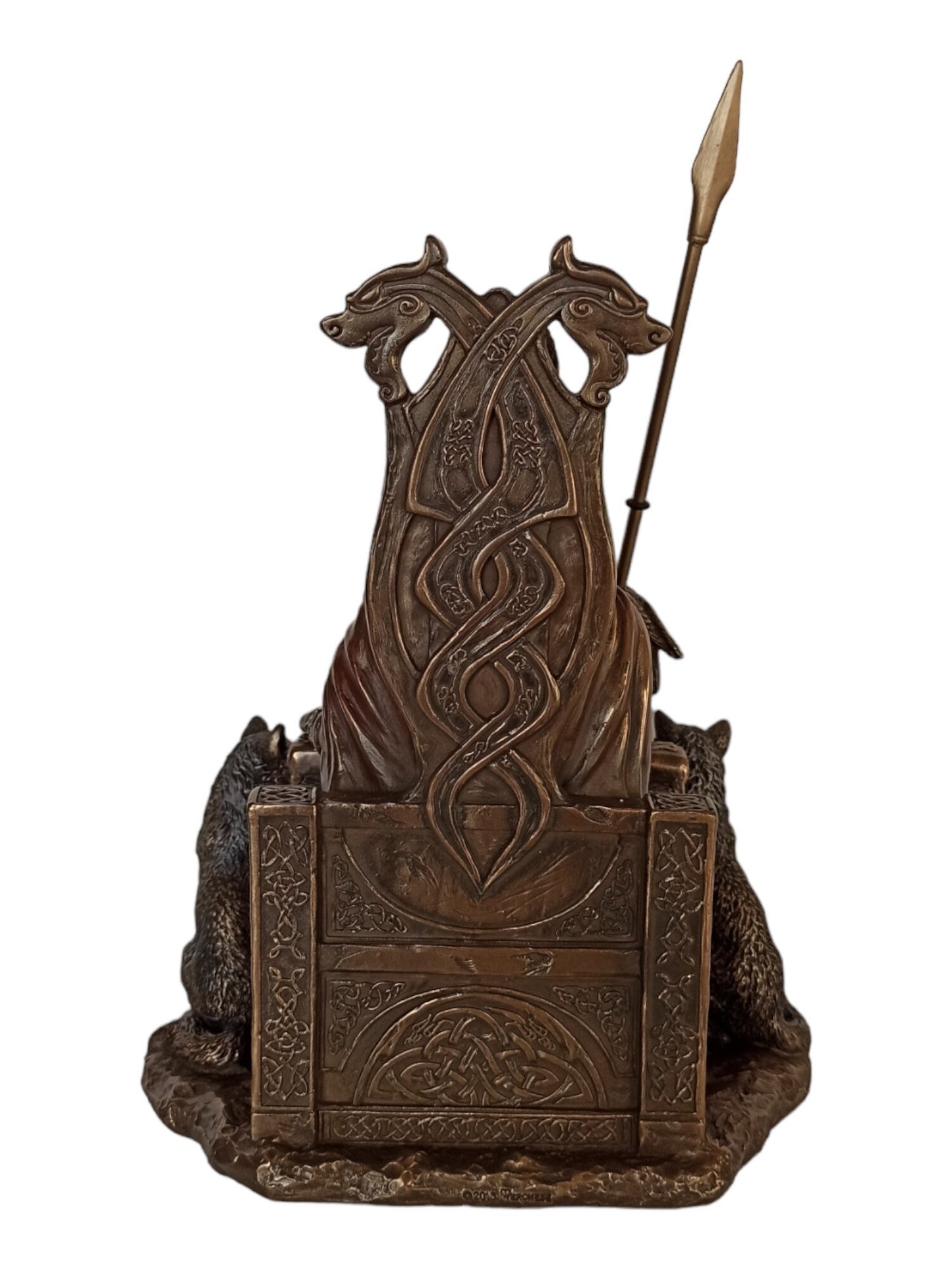Gallery Demeter
Odin - God of Wisdom, Healing, Death, Royalty, Knowledge, War, Battle, Victory, Sorcery, Poetry, Runic Alphabet - Cold Cast Bronze Resin
Odin - God of Wisdom, Healing, Death, Royalty, Knowledge, War, Battle, Victory, Sorcery, Poetry, Runic Alphabet - Cold Cast Bronze Resin
Couldn't load pickup availability
Details:
Condition: New
Material: Cold Cast Bronze Resin
Height: 26,5 cm - 10,4 inches
Width: 17,5 cm - 6,9 inches
Length: 11,5 cm - 4,5 inches
Weight: 1840 g
Odin is a widely revered god in Germanic paganism. Norse mythology, the source of most surviving information about him, associates him with wisdom, healing, death, royalty, the gallows, knowledge, war, battle, victory, sorcery, poetry, frenzy, and the runic alphabet, and depicts him as the husband of the goddess Frigg. In wider Germanic mythology and paganism, the god was also known in Old English as Wōden, in Old Saxon as Uuôden, in Old Dutch as Wuodan, in Old Frisian as Wêda, and in Old High German as Wuotan, all ultimately stemming from the Proto-Germanic theonym *Wōðanaz, meaning 'lord of frenzy', or 'leader of the possessed'.
Odin appears as a prominent god throughout the recorded history of Northern Europe, from the Roman occupation of regions of Germania (from c. 2 BCE) through movement of peoples during the Migration Period (4th to 6th centuries CE) and the Viking Age (8th to 11th centuries CE). In the modern period, the rural folklore of Germanic Europe continued to acknowledge Odin. References to him appear in place names throughout regions historically inhabited by the ancient Germanic peoples, and the day of the week Wednesday bears his name in many Germanic languages, including in English.
In Old English texts, Odin holds a particular place as a euhemerized ancestral figure among royalty, and he is frequently referred to as a founding figure among various other Germanic peoples, such as the Langobards, while some Old Norse sources depict him as an enthroned ruler of the gods. Forms of his name appear frequently throughout the Germanic record, though narratives regarding Odin are mainly found in Old Norse works recorded in Iceland, primarily around the 13th century. These texts make up the bulk of modern understanding of Norse mythology.
Old Norse texts portray Odin as the son of Bestla and Borr along with two brothers, Vili and Vé, and he fathered many sons, most famously the gods Thor (with Jörð) and Baldr (with Frigg). He is known by hundreds of names. Odin is frequently portrayed as one-eyed and long-bearded, wielding a spear named Gungnir or appearing in disguise wearing a cloak and a broad hat. He is often accompanied by his animal familiars—the wolves Geri and Freki and the ravens Huginn and Muninn, who bring him information from all over Midgard—and he rides the flying, eight-legged steed Sleipnir across the sky and into the underworld. In these texts he frequently seeks greater knowledge, most famously by obtaining the Mead of Poetry, and makes wagers with his wife Frigg over his endeavors. He takes part both in the creation of the world by slaying the primordial being Ymir and in giving life to the first two humans Ask and Embla. He also provides mankind knowledge of runic writing and poetry, showing aspects of a culture hero. He has a particular association with the Yule holiday.
Odin is also associated with the divine battlefield maidens, the valkyries, and he oversees Valhalla, where he receives half of those who die in battle, the einherjar, sending the other half to the goddess Freyja's Fólkvangr. Odin consults the disembodied, herb-embalmed head of the wise Mímir, who foretells the doom of Ragnarök and urges Odin to lead the einherjar into battle before being consumed by the monstrous wolf Fenrir. In later folklore, Odin sometimes appears as a leader of the Wild Hunt, a ghostly procession of the dead through the winter sky. He is associated with charms and other forms of magic, particularly in Old English and Old Norse texts.
The figure of Odin is a frequent subject of interest in Germanic studies, and scholars have advanced numerous theories regarding his development. Some of these focus on Odin's particular relation to other figures; for example, Freyja's husband Óðr appears to be something of an etymological doublet of the god, while Odin's wife Frigg is in many ways similar to Freyja, and Odin has a particular relation to Loki. Other approaches focus on Odin's place in the historical record, exploring whether Odin derives from Proto-Indo-European mythology or developed later in Germanic society. In the modern period, Odin has inspired numerous works of poetry, music, and other cultural expressions. He is venerated with other Germanic gods in most forms of the new religious movement Heathenry; some branches focus particularly on him..
GRI 145-77392A4 ΟΝΤΙΝ 26,5X18 EK - 52









